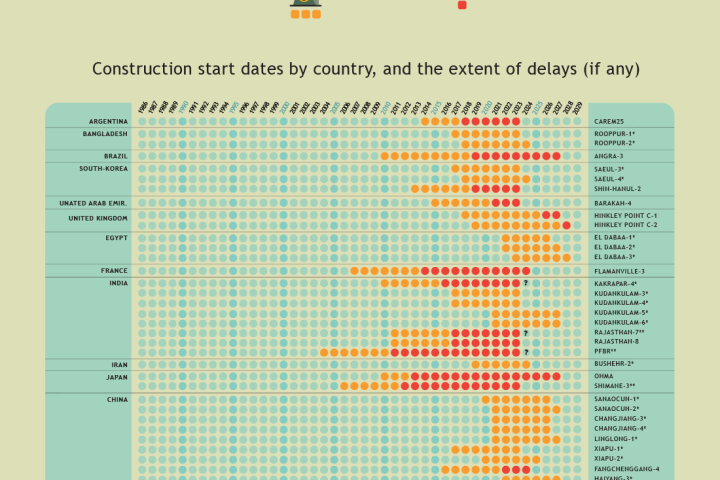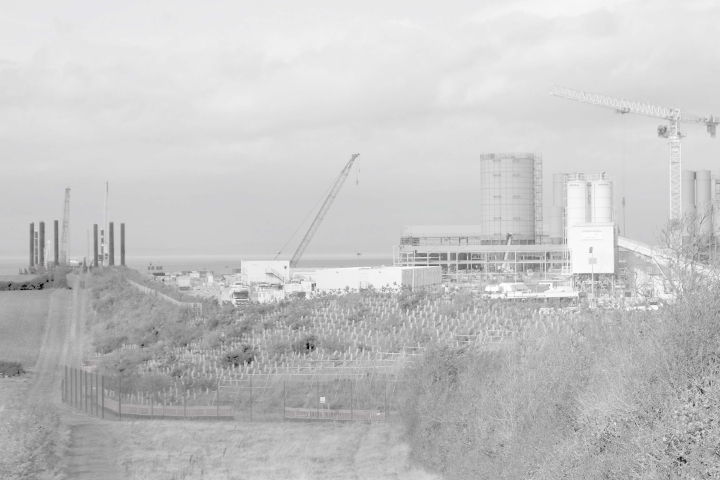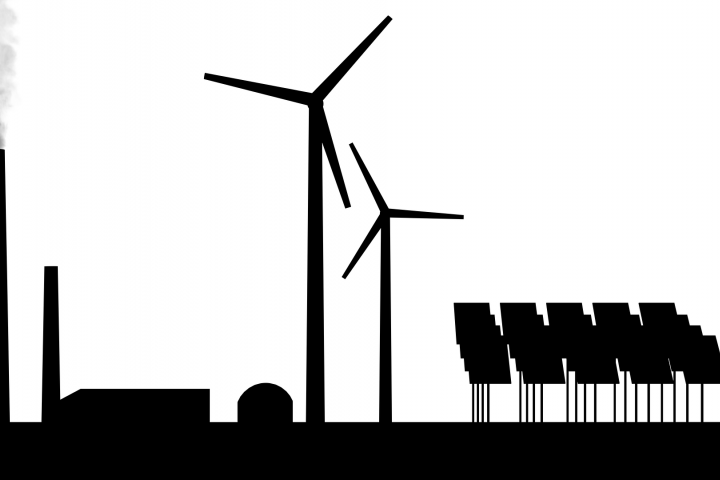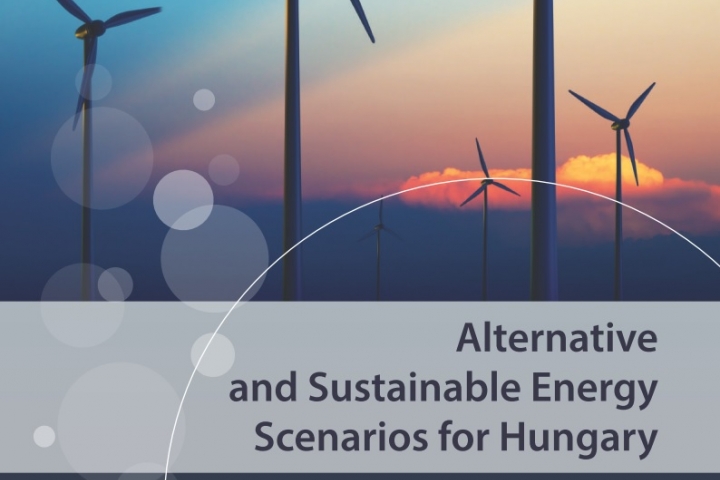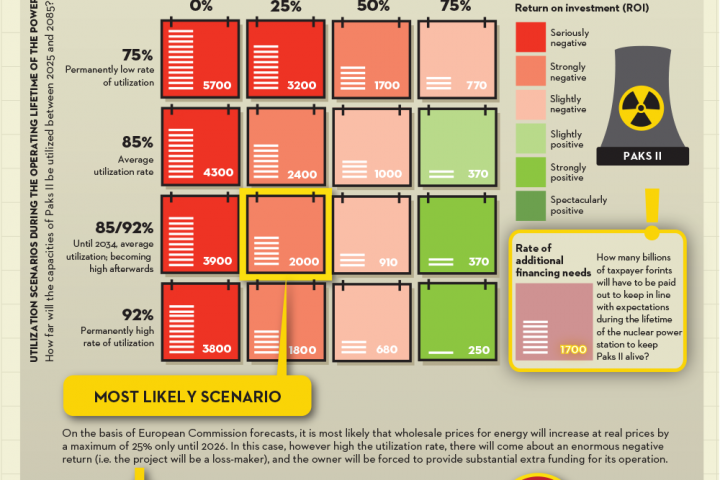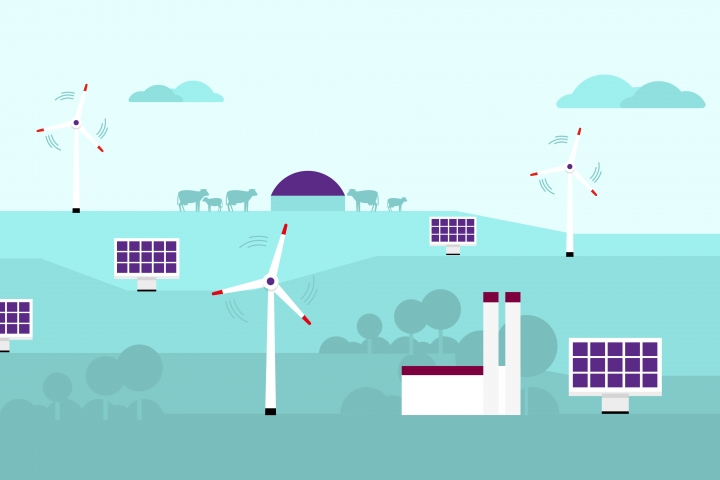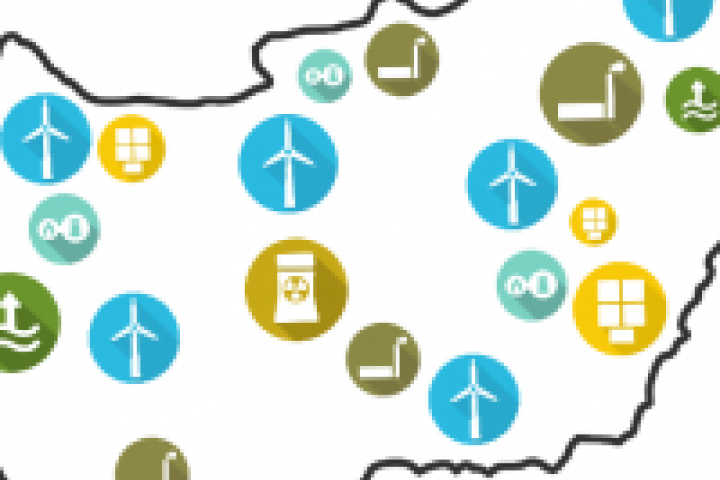Interview with Petteri Tiippana, Director General of the Radiation and Nuclear Safety Authority of Finland
Finland made headlines last year by cancelling a nuclear construction project, Hanhikivi, with the Russians. Their other recent news was to finally manage to start up the much awaited Olkiluoto 3 nuclear power plant in 2023 - instead of 2009.
The history of the nuclear industry in Finland is similar to Hungary in that Finland also has an old, Russian-designed nuclear power plant, still in operation after lifetime extension, and they have also signed a contract (although after tendering) for a new plant with the Russians. However, similarities more or less end here. The share of nuclear energy in the electricity mix of Finland is relatively high (30%) but much lower than in Hungary, and the nuclear power plants are not owned or operated by the state – they are built and operated on a commercial basis. But probably the most astonishing difference is transparency.
Finland’s first nuclear power plant, the two-reactor Loviisa, has the same, Soviet-designed VVER-440 units as Paks I and also started to operate in the late 1970s. The operating licence was renewed in 1998 and 2007 and this year it has been granted an operating licence until 2050.
The second, Olkiluoto, consists of two BRW reactors and a new French-designed EPR reactor, which was started to be built in 2005, scheduled to start up in 2009 and, after much delay, started to operate commercially in May 2023. The new reactor, Olkiluoto-3 is currently the most powerful nuclear power plant unit (1600 MW) in Europe but its long construction was characterised by major problems, delays and cost overruns. Faulty parts have been found, safety test have been delayed, and there have been disputes ending in lawsuits. The final costs are over $8.5 billion, triple the original cost estimates.
Hanhikivi was planned to house a Rosatom-designed reactor (which won a tender against the French Areva and the Japanese Toshiba). But as Rosatom would have owned 34% of the plant, it would have enabled Russia to manipulate Nordic power prices or use the reactor in political disputes. In addition to geopolitical risks, the project was unable to meet its schedule, cost and quality goals. At the time of the construction licence phase, it was also unclear if the reactor was able to meet the safety requirements of STUK, the Finnish Radiation and Nuclear Safety Authority. Due to the difficulties, Fennovoima utility (license applicant and project owner) decided to terminate the project in spring 2022.
We have interviewed Petteri Tiippana, Director General of the Finnish Radiation and Nuclear Safety Authority (STUK) about the projects, safety aspects as well as similarities between Hanhikivi and Paks II.
How far was Hanhikivi from being granted the necessary permit for construction to start?
First of all, it is important to clarify that STUK is not the licencing authority in Finland for nuclear facilities. It is the Ministry of Employment and Economy. STUK conducts safety reviews and provides a statement on safety and a safety assessment to the Ministry, which is a prerequisite for the Ministry to proceed with a licencing decisions.
The licencing documents that need to be submitted for the authority or regulator are to my understanding pretty much the same in Finland and Hungary: one of the most important is the preliminary safety analysis report, which is a huge package of documents. It describes the site, the organisations and most importantly the safety and engineering of the facility, i.e. the safety analysis results. We have received most of that package, but not all. The most important missing parts were the probabilistic risk assessment results and a complete design documentation for the instrumentation and control systems. In Finland the licence applicant also has to submit their own safety evaluation on how well they or the design meet Finnish safety requirements – and that was also missing.
The documentation was submitted to STUK in several batches. We conducted the review and assessment of the batches when they were submitted, and on each of the batches we had findings, open items: altogether we had more than one thousand open items on the parts that we had reviewed. Some more important than the others but altogether more than a thousand. Open items would have needed to be resolved before STUK could have finalised its safety review. In practice it would have meant updates and corrections on the already submitted batches.
I can't estimate how long it would have taken the vendor and licence applicant and then us to go through the updates and the missing parts. It would have taken months, obviously, and then it would have been up to the government to make a decision on the construction licence. I know that the licence applicant had a goal to get the construction licence before the general elections in April 2023 but it's not clear whether they would have been successful in achieving that because there was still a lot of work to be done.
In Hungary, the Russians, even though using a different business model, have reached the same point (with Paks II.) as in Finland, so in many respects we like to draw conclusions from what happened in Finland. Are there indeed similar errors, identical patterns, from which it is worth drawing conclusions?
When a licence applicant and a vendor enter into a licencing procedure in a country, they should have things ready for the licencing. In Finland we started licencing this design for construction in 2015 and it went on for seven years. That's not typical, that's not how it should go. The vendor should be better prepared when coming to a country and the licence applicant as well.
As for your question about similarities between Hungarian and Finnish projects, I know that the licencing schemes and documents are fairly similar. The main difference between the licencing schemes is that while in Hungary the regulator is the licencing authority, in Finland we are not. And in Hungary the licence is sequenced in smaller parts than in Finland. In Finland there is one construction licence and once granted, the construction of safety structures and buildings can start. Whereas in Hungary the licencing happens in phases, which allows the licence applicant or the utility to go forward with construction.
I know that in both countries we were dissatisfied with the quality of the documentation that was submitted by the licence applicant or the vendor to us. A lot of information was missing and for instance the quality of the language was low. While in Finland we were dealing with the licence applicant in English, in Hungary everything has to be translated into Hungarian.
When you're referring to the “quality of the documentation”, do you mean technological issues or regulation issues?
It can be just poor language. The language is not understandable or has errors which make the design and the technology impossible to understand. The majority of issues came from that – unclear documentation. But of course there were issues of technological nature – the technology didn't meet our requirements or they didn't understand our requirements.
Would you say that the Finnish safety requirements are more strict than the Hungarian ones? What are the differences between them?
I don't think there is a big difference in our regulations in terms of how strict we are: we are both following the IAEA safety standards, we are both following WENRA, Western European Nuclear Security Regulators Associations and its safety reference levels, and I know that in Hungarian and Finnish regulatory guides the level of requirements or criteria is fairly close to each other so I don't think there is a big difference.
Several years ago you stated that “for the next projects we want to make sure that the applicant knows the regulatory system and requirements in Finland because this will influence the implementation of the project”. Do you think you were too idealistic? During the licencing procedure of the Hanhikivi 1 the Russian side was found to be very much at odds with this.
Idealistic or not, I still think that it is important that the licence applicant and the vendor understands well the country and the regulatory framework that they are going to enter in. Clearly the Russians, if not Fennovoima as well, did not do their homework well enough and that resulted in a fairly lengthy construction licence application phase. They started to work on the construction licence in 2015.
Do you think you could have done more or differently, when you were communicating with the Russians about your regulatory framework in order to help them to understand it more? Or do you think you did the most you could?
I think we did a lot to communicate with the licence applicant and the vendor. We had numerous meetings: trilateral meetings and bilateral meetings with the licence applicant. But communication has to go both ways. We have an expression in in Finland saying that “if the horse doesn't drink, the horse doesn't drink.” You can show the well to the horse but if it doesn't want to drink, then there is nothing you can do.
As for the safety of existing power plants, how long do you think aging can be tolerated in a nuclear power plant? It is not only because of the Fukushima tragedy that the conditions for operating nuclear power plants have changed, but also because seismic risks and climate change risks have become criteria to consider. Don’t you think it is like driving a car without an ABS or a seat belt?
I don’t think we can tolerate aging, it is more that we, and the licensees particularly, have to manage aging and aging effects. Licensees need to have aging management programmes in place, through which they control the aging of the systems, components and structures and also the obsolescence of their technologies. They need to have monitoring, preventive maintenance, and they have to conduct research on the aging phenomena to be prepared for the known and unknown aging effects. And they have to improve safety whenever research, operative experience or the development of science or technology enable reasonable safety improvements.
Driving a car without an ABS or seatbelts is not a good example. It is allowed to drive an old car without an ABS but in the nuclear industry there is a continuous improvement of safety. In the car industry it would mean that the old cars are either not allowed to be driven or they have to be equipped with an ABS. After the Fukushima accident huge safety improvement programmes were implemented in all European nuclear power plants. And I don’t think the same happens in the car industry. If there is an accident on the road, you don’t hear traffic regulators saying that every car needs an ABS, otherwise you don’t drive.
You recently said that STUK may be too strict on safety issues. What did you mean by that? Can the safety protocol of a nuclear power plant be too strict?
I was speaking about radiation protection. Of course it is also related to nuclear safety because if we have issues of nuclear safety, it may result in radioactive releases that might be harmful for us. But I was more speaking about how much we protect people from radiation. In radiation protection there are two principles. One is justification: when you use radiation, for x-raying for example, it should result in more good than harm. The other principle is optimisation: the dose that you get when you are x-rayed, is as low as it is reasonably achievable. You don’t get a dose higher than the one needed for the x-ray image to be good enough for the diagnoses. And both principles are applicable for the safe use of nuclear energy, too. However, in applying the optimisation principle in the use of radiation we have gone too far: it is no more optimisation, it is more like minimisation. I’m also thinking about risks in general that we have around us, just take the example of traffic. In Finland, 200-300 people are killed in traffic accidents every year. In other sectors we have other risks and I think that for radiation we have pushed the risks really low compared to risks we have around us all the time. And that is a discussion we should have at international fora.
In an interview in October last year, you said that "the Finnish way of supervising nuclear power plants" is working well. What is the Finnish method?
In Hungary it might be fairly similar. In both countries we have fairly detailed requirements. But it's mainly about how we regulate the industry – in Finland we want to be proactive in our oversight activities. We want to see the plans and documents beforehand (for instance if a licensee applies for manufacturing or construction of a component or structure), we want to see that the plans are good enough to meet our requirements and then we approve them and they can go on and do the construction or manufacturing.
In some other countries this is not done by the authority, at least not to the extent that we do that in Finland. It might be done reactively, afterwards: the regulator comes and sees the documents and either says that everything is fine or sees that there are thousands of problems.
I think the other thing is that in Finland we want not only to oversee the technology but also oversee and evaluate the organisations that are in the business, particularly of course the licence applicant and the vendor and its main suppliers of safety components, structures, and systems or services. We want to see that they are well resourced, they have the people and competencies in place, they have the processes in place with which they can meet the safety requirements and most importantly produce products that meet the safety requirements. We also evaluate the organisational culture of the organisations to make sure that it supports safety as a priority.
To what extent is the Olkiluoto-3 project sustainable today and to what extent is your opinion different from what it was a decade ago? In an interview with Nuclear Engineering International in 2010 you said that many lessons had been learned from the project, most notably that a new reactor is not easy to build. All this was at a time when no one knew that the Olkiluoto-3 still had a long way to go. But you also said that the key question is the licensee’s know-how, management and staffing.
I still think that the Olkiluoto-3 is safe. We have been reviewing it for 20 years, so we know it inside out. We have been able to evaluate it and provide the green light from safety perspective – and of course safety is part of sustainability as well. As for economic sustainability, that’s not my business.
Whether I'm still of the opinion that I was 10 years ago or 13 years ago - I think I am. First, it is difficult – you have to be prepared that not everything goes well at the first attempt. The other thing is that it's important to have the right people at the right place, who have the right expertise, competencies and experience, particularly in the senior management at the licence applicant but also at the vendor and supply chain organisations. So I think I still agree with what I said 10 years ago.
A Finnish team, the VTT technical research centre, has recently entered the international race for the SMR technology and nuclear industry players are showing interest in small scale nuclear power plants. As a licencing and regulatory authority what will be your role in this? And what is your opinion about SMRs?
The SMR hype? I'm mostly listening and taking part in the discussions in Finland on SMRs. First of all, I think, no matter whether it is a small, a medium or a large reactor, they are all reactors - and with that you have to address nuclear safety, radiation safety, safeguards, waste and security. Most of the discussions are about the benefits of SMRs, saying that they are safer, faster to build, more economic to operate. We’ll see whether these promises are really fulfilled. But from safety perspective, when you bring in new innovations in the design – more passive features, smaller size – it is probably easier to demonstrate safety than for existing active large reactors. So in that regard there is potential, but the discussion should consider the whole picture: it is actually a reactor, therefore it has to be secured, it has to be safeguarded and we also have to take care of the waste. At this point these are ignored particularly by newcomers in the business, who don't know the total package that comes with a reactor.
In Finland, we are currently discussing the possibility for smaller cities having small reactors for district heating. They may offer opportunities for smaller companies – electricity and energy companies at municipalities – but still it's not as simple as it seems from the public discussions nowadays.
Is it on your current agenda to deal with the smaller technologies or are you just keeping your eyes open and see what comes up?
Yes, we have it on the agenda, so it is much more than just listening and commenting on the discussions. Discussions with long-time industry players are more thorough and comprehensive. Players that have been in this sector for some time (utilities, some energy companies, research organisations) know the whole package of what comes with building a reactor. However, newcomers – for example wind power companies – who would like to start constructing SMRs like wind parks, are not always aware of the whole package.
In addition, the Ministry has made a decision to conduct a full renewal of the nuclear energy legislation and at the same time we at STUK are also going to renew our regulations and regulatory guides. There are several reasons for this and one is the discussion and appetite for SMRs. The current legislation can be applied for SMRs but it is not effective and efficient enough. It has requirements that may not be needed for SMRs, for instance severe accident management, containment and the protection zones around NPPs because these are meant for large light-water reactors. We are now screening the criteria to see what criteria are not feasible for SMRs and what are, and whether new ones are needed. The other driver is of more bureaucratic nature for the Nuclear Energy Act: the hierarchy of requirements is not optimal. We have significant requirements in lower level documents that should be on the level of acts or decrees. The Nuclear Energy Act is old, 30 or 40 years old – it has been updated and amended here and there and it's not any longer very consistent. It has internal inconsistencies and there are inconsistencies between the Nuclear Energy Act and the Radiation Act. We are mainly renewing the Act to resolve these inconsistencies but SMR technology is also one of the drivers for renewing it. Work has already started and it will continue for three or four years. We will see what the new government will decide on nuclear energy but I think the renewal of the Act and regulations will continue.
Meanwhile we are having discussions with the Finnish VTT who have their own plans for a district heating reactor. The other actor is Lappeenranta University of Technology, which is also negotiating with another vendor on another design, which would involve a new technology not yet used in Finland. So we have to start building up our expertise on different designs. And then there are some ongoing activities on international forums on SMRs. IAEA is active, the EU is active, OECD and NEA are having actions and we are following and participating in all of them, mostly to learn and see what others are doing and to be informed about what the best models would be for Finland.
How are NGOs in Finland involved in the nuclear industry – do you have any conversation with Finnish NGOs specialising in nuclear issues or do the government speak to them? If they do, how open, how transparent the conversation is? In Hungary basically we are the only organisation that still tries to keep up with the Hungarian nuclear situation and we have a hard time because most of the information is confidential and therefore inaccessible.
Then Hungary is in a better position because at least you have one NGO that is interested. In Finland we don't have any NGOs who are actively engaging in nuclear topics. Greenpeace was much more active at the beginning of the Olkiluoto 3 project in 2003-2006. We had discussions with them quite regularly but after that they moved their focus on other topics.
I'm quite surprised. I thought there are some energy or climate NGOs that you are having discussions with about safety.
Finland is small and there are few stakeholders in the nuclear sector. It would be good, also from the accountability point of view, to have active NGOs or other stakeholder groups who ask what we are doing and why. We used to conduct meetings at the Loviisa and Olkiluoto nuclear sites annually. We went there, had a discussion, presented our evaluations but there were just a handful of people, maybe ten, or at some meetings a bit more. So there's not so much interest. The ministry organises public hearings about the licencing decisions and environmental impact assessment phases and I think at those hearings there is more audience but I'm not sure how critical and interested and motivated they are to push us and make us accountable. We try to be as accountable as we can but it's not really measured by NGOs.
